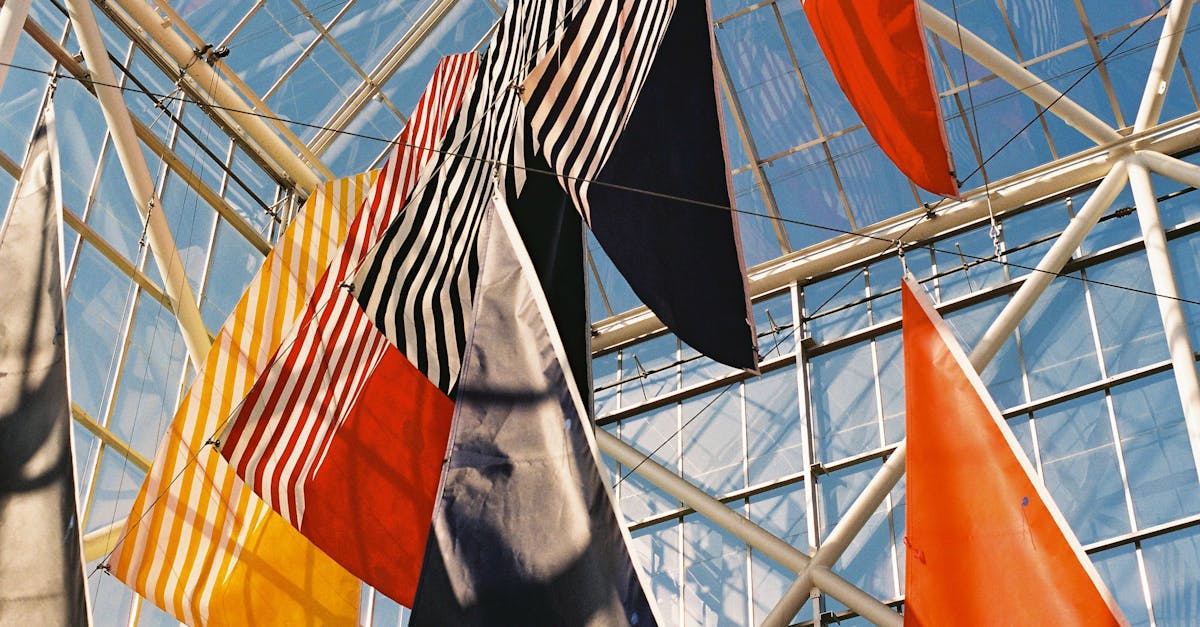
What should I check for during the inspection of the metal tile roofing?
Table Of ContentsTo apply the sealant effectively, use a caulking gun to distribute a generous amount along the edges and overlaps of the metal tiles. Be meticulous in covering all the areas where water could potentially penetrate. Allow the sealant to dry completely before inspecting the roof to ensure that it has formed a tight seal. By taking the time to apply sealant correctly, you can enhance the longevity and durability of your metal tile roofing system.
Enhancing the Energy Efficiency of Corrugated Metal RoofingCleaning up after the installation process is essential to remove debris and unused materials f
g appropriate insulation materials, such as foam boards or batt insulation, heat transfer can be minimised, thus improving energy efficiency. Additionally, coatings like reflective paints or thermal barriers can further enhance the roof's ability to regulate temperatures, reducing the cooling load on the building during hot weather and maintaining warmth in colder climates.Related Links
When considering insulation options, factors such as R-value and thickness must be taken into account to ensure optimal thermal performance. In addition, choosing coatings with high solar reflectance and thermal emittance properties can significantly reduce heat absorption and improve overall energy efficiency. By combining effective insulation with appropriate coatings, corrugated metal roofing can provide superior thermal performance, creating a more comfortable indoor environment and potentially lowering heating and cooling costs for building occupants.Benefits of Metal Tile Roofing for Australian Homes
Exploring the Cost Factors of Corrugated Metal RoofingResilience of Metal Tile Roofing in Extreme Australian Weather
The cost factors associated with corrugated metal roofing vary based on several key elements. One of the primary factors influencing the cost is the type of metal used for the roofing material. Different metals come at varying price points, with options such as zinc, aluminium, and copper each offering distinct cost implications. Additionally, the thickness and quality of the metal sheets utilized in the roofing can significantly impact the overall expense, with thicker, more durable sheets generally commanding a higher price.Environmental Impact of Metal Tile Roofing in Australia
Another crucial cost consideration when installing corrugated metal roofing is the size and complexity of the roof structure. Larger roofs naturally require more materials, resulting in higher costs. Moreover, if the roof has intricate architectural features or requires special customization, such as unique angles or shapes, the installation process can become more labour-intensive, leading to increased expenses. It is essential for individuals considering corrugated metal roofing to carefully evaluate their specific needs and budget constraints to determine the most cost-effective and practical solution for their roofing project.Design Options for Metal Tile Roofing in Australian Architecture
Factors That Influence Pricing and Budget ConsiderationsDurability and Longevity of Metal Tile Roofing in Australian Conditions
When considering the pricing and budget for corrugated metal roofing, there are several key factors that can influence the overall cost of the project. One major factor is the size and complexity of the roof itself. Larger roofs with intricate designs or multiple angles will typically require more materials and labor, leading to higher costs. Additionally, the pitch of the roof can also impact pricing, as steeper pitches may necessitate additional safety measures and expertise from the roofing team.Enhancing Energy Efficiency with Metal Tile Roofing
Another important consideration when budgeting for corrugated metal roofing is the choice of material. Different types of metal roofing, such as steel, aluminium, or copper, come with varying price points. Steel is often the most cost-effective option, while copper is considered a premium material with a higher price tag. It's essential to weigh the advantages of each material against their respective costs to find the best fit for both your budget and long-term needs.
Comparing Corrugated Metal Roofing to Other Roofing Options
Corrugated metal roofing offers a wide range of benefits that set it apart from other roofing options. One key advantage is its exceptional durability, as metal is highly resistant to harsh weather conditions such as heavy rain, winds, and snow. This longevity ensures that corrugated metal roofs have a longer lifespan compared to traditional roofing materials like asphalt shingles or wooden shakes.
How does the pitch of the roof affect the installation of corrugated metal roofing?
The pitch of the roof plays a significant role in determining the water shedding capability of corrugated metal roofing. A steeper pitch allows water to flow off the roof more efficiently, reducing the risk of leaks and water damage.
Can corrugated metal roofing be installed on low-pitch roofs?
Yes, corrugated metal roofing can be installed on low-pitch roofs, but additional waterproofing measures may be required to ensure effective water drainage and prevent water pooling.
Are there any special considerations to keep in mind when installing corrugated metal roofing on a high-pitch roof?
When installing corrugated metal roofing on a high-pitch roof, proper safety measures should be implemented to prevent accidents during the installation process. It is also important to follow manufacturer guidelines to ensure the roof is installed correctly.Terms of Use
How can I determine the ideal pitch requirement for my corrugated metal roofing project?
The ideal pitch requirement for your corrugated metal roofing project can be determined by consulting with a roofing professional or referring to the manufacturer's guidelines based on the specific profile and design of the roofing material being used.
Related LinksPrivacy Policy
Attaching Flashing and Trim to Corrugated Metal Roof EdgesSealing and Waterproofing Techniques for Corrugated Metal Roof Installation
Inspecting and Testing the Installed Corrugated Metal Roof for Quality Assurance
Securing Ridge Caps and End Ridges on a Corrugated Metal Roof
Tips for Cutting and Trimming Corrugated Metal Panels during Installation
Factors to Consider for Underlayment Installation with Corrugated Metal Roofing
Selecting the Right Fasteners for Corrugated Metal Roofing